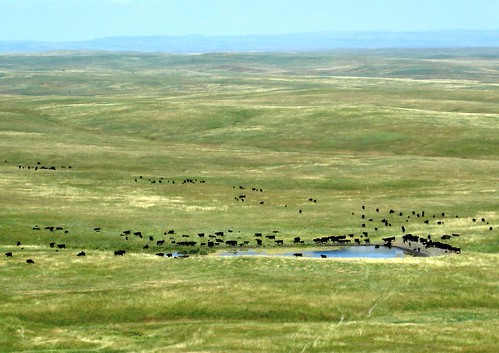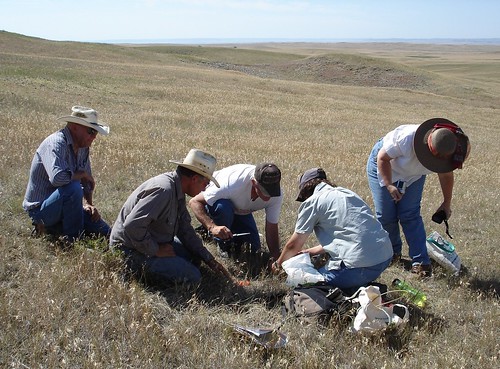
On any given day during grazing season, Black Angus cattle amble across areas of the Oglala National Grassland in northwestern Nebraska. Yet they play a bigger role than just grazing for their daily meal. They help support the local economy, are the lifeline of a family business and have a role in a healthy rangeland ecosystem.
The cattle belong to the 32 members of the Sugarloaf Grazing Association who have grazed livestock on the grassland since 1960. The ranchers also are actively involved with the Forest Service and other stakeholders in a number of conservation issues and projects associated with the Oglala.
“We take an active interest in conditions like drought, off -highway and all-terrain vehicles, the allotment management plan process, and wildlife concerns,” said Jim Fox, association president. “They all have an impact on the goals and objectives related to the vegetation needed for forage and the production of beef.”
The association played a crucial role in implementing the Forest Service’s recent decision on how to manage the black-tailed prairie dog. Association members became active partners to support the project, including hosting a number of successful meetings on the topic.

Many issues besides livestock grazing influence the vegetation objectives and the Forest Service’s management for multiple-use of the grassland. The Forest Service often invites grazing permit holders and other stakeholders to get involved in rangeland issues to promote collaboration among users.
“While grazing may be the Sugarloaf Association’s primary business in order to raise beef and bring them to market, their members are also working as a partner with the Forest Service” said Mark Lane, Range Program manager for the Nebraska National Forests and Grasslands. “They have a sincere interest in managing these lands for a variety of uses and supporting their long-term sustainability.”
For their lifetime commitment to improving the grassland for multiple uses, the Association received the National Forest System External Partner Award in 2011, in addition to receiving the same award in 1989.

